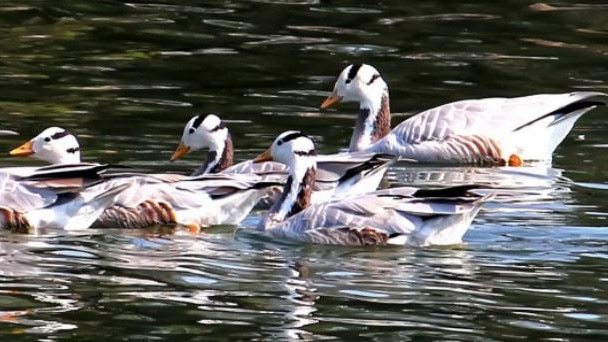Geese are ‘athletes of the bird world’ as study finds they can fly over Mount Everest
In 1953 Edmund Hillary’s team claimed Geese flew at heights thought impossible. Scientists reveal they weren’t hallucinating.

It was 1953, and the British Everest team were preparing for the final push to get Edmund Hillary and Tenzing Norgay to the summit.
On the high slopes, where each breath and every step was an effort, George Lowe shuttled supplies. Then, panting in the thin air, he looked up and saw an apparition: a goose, flying effortlessly over the summit.
At almost 9,000 metres, a region known to humans as the “death zone”, the bird seemed to be completing a routine migration.
Now scientists have uncovered the astonishing metabolic tricks the bar-headed goose pulls off to achieve the feat of flying over Himalayan passes, making it among the highest-flying birds in the world.
They have also shown that Lowe, whose expedition was sponsored by The Times, was probably not imagining it when he claimed to have seen this one even higher.

They did so by training goslings to fly in a wind tunnel while wearing breathing apparatus that could simulate conditions up to the height of Everest.
As the altitude rose, they watched as the birds lowered their blood temperature and adjusted their energy use to keep going with a third of the oxygen available at sea level.
The bar-headed goose migration is one of the wonders of the natural world. For millions of years the geese have been travelling north from India to Mongolia and China to breed.
During that time, the Himalayas have been growing. Each year, the mountains have been imperceptibly higher, each year the migration a little bit harder. As fast as the peaks have risen though, evolution has kept up. The result is that satellite trackers have shown the geese happily crossing passes at 5,000 or 6,000 metres, well above the height of Mont Blanc.
Anecdotally, they seem to go higher.
Lowe, a New Zealand climber, stayed quiet about his sighting until 1961 when a climber on Makalu, close to Everest and the fifth highest mountain in the world, made the same report.
“On one cold and still night in early April, I stood beside the Barun glacier,” the explorer Lawrence Swan wrote. “Coming from the south, the distant hum became a call. Then, as if from the stars above me, I heard the honking of bar-headed geese.”
Julia York, from the University of British Columbia, investigated further. The first step was to train the geese to believe that she and her colleagues were their parents.
“We bought eggs and waited for them to hatch,” she said. “We spent every day with them. It was an idyllic summer going for swims and eating lettuce and having naps. It was so much fun.”
As the geese grew older, they began introducing them to the apparatus. “We trained them to wear these little backpacks that held heartrate monitors and blood temperature devices, and to put masks on their face.”

It was when they put them in the wind tunnel that the bond they had developed was most crucial. “They didn’t really understand it. Some would turn around and try to run away from the wind. They would get caught up in their own feathers. It was a disaster.”
Eventually, they got the birds flying and slowly raised the altitude. Then they monitored their readings. The first surprise was that the effort they expended did not seem to change significantly - their heart rate and wing beats remained the same.
One explanation for this is that they were flying more efficiently. Another is that they temporarily switched off unnecessary activity, such as superfluous parts of the brain or digestion. A further intriguing adaptation, which the scientists described in the journal eLife, was that the birds’ blood temperature dropped by about two degrees centigrade. This may be a way of helping them to pump more oxygen to their muscles, by tweaking the blood cells’ ability to bind and release the gas.
Ms York, who is now a graduate research assistant at the University of Texas at Austin, has had to say goodbye to her geese, which have been adopted by a wildfowl enthusiast in Vancouver.
She said that they had done their job, proving they “are the athletes of bird world”. They have also shown that when an oxygen-starved George Lowe looked up into the deep blue of a Himalayan sky that day, he may not have been hallucinating after all.
The Times


